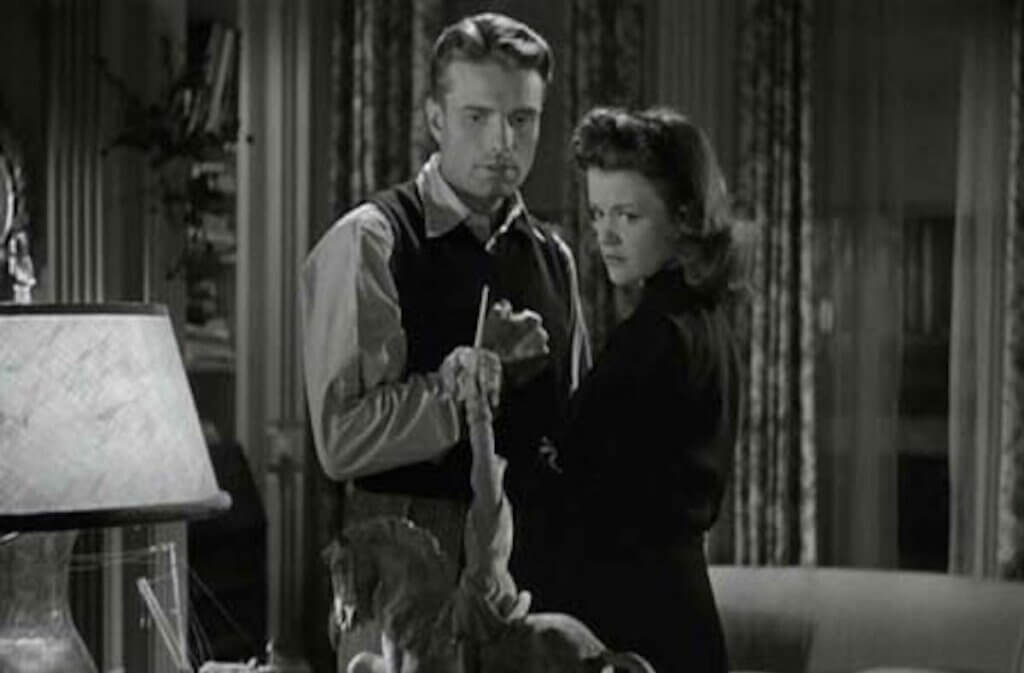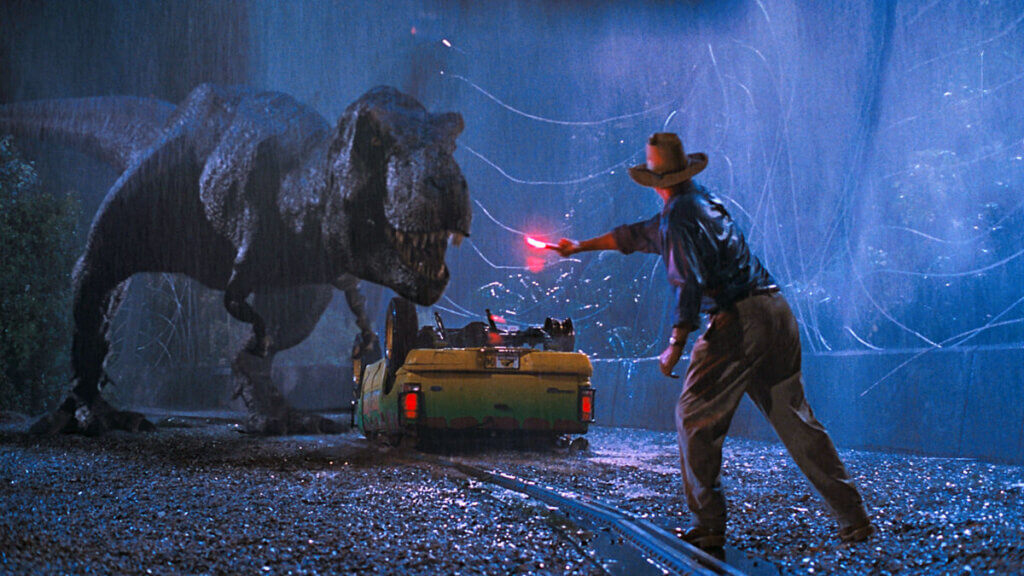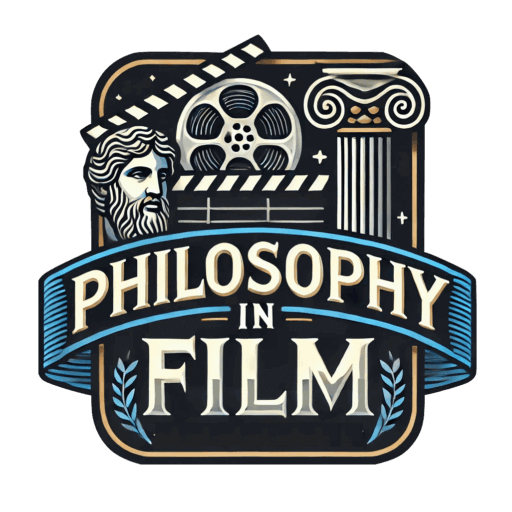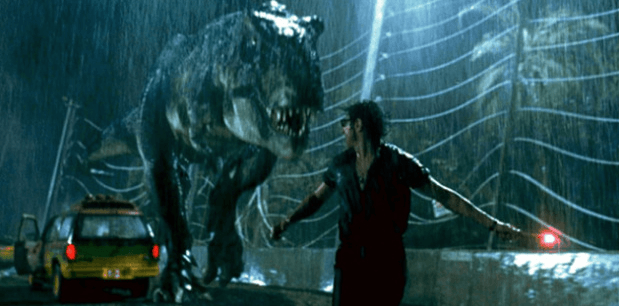Feminist Film Theory: Freeland and Mulvey
During the second wave of feminism in the 1960’s and 70’s, feminist theorists put increasing attention on representations of women in media. Many Hollywood feature films attracted attention due to their pervasive impact in culture and their history of problematic female representations. Laura Mulvey was particularly influential in the field of feminist film theory. In her article, “Visual Pleasure and Narrative Cinema,” Mulvey uses psychoanalytic theory to argue that films, on a structural level, present negative images of woman as “objects” that are subject to the “male gaze.” Spectators, male and female, are made to identify with this “gaze,” thus objectifying the female in the spectator’s mind and in the narrative.
Over 20 years later, Cynthia A. Freeland wrote “Feminist Frameworks for Horror Films,” which critiques this psychoanalytic approach to spectatorship, and offers a different approach that analyzes the female representations in specific films of the horror genre in relation to their historical and cultural context. While the theories of Freeland and Mulvey focus on different topics in film, namely genre and spectatorship, they both look at film from a feminist perspective. Freeland provides a stronger argument for feminist film theory by putting less emphasis on psychoanalysis and analyzing the representations of women and cultural contexts of individual films.
Laura Mulvey begins by establishing her intentions to connect the filmic image of women with politics. Specifically, she uses psychoanalysis to interpret the way in which “the unconscious of patriarchal society has structured film form” (Mulvey 711). First, patriarchy, at its most fundamental level, relies on the symbolic image of the powerful phallus. This image is given more power by the conceptual and physical lack of a phallus on the part of women.
This “castration,” according to Mulvey, brings “order and meaning to the world” Mulvey 711). The phallus (and patriarchy) is given power by being juxtaposed with the woman who is “lacking.” Thus, women do not serve a significant role in society, because they are lacking a phallus, and they try to make up for this loss by being the child-bearer. In short, the female is only given symbolic meaning in relation to the phallic image, and the meaning is one of subordination and deficiency. The woman is the “bearer of meaning, not maker of meaning” (Mulvey 712).
» You Might Like: Jonathan Glazer’s “Birth” as a Problematic Test Case for Art Horror
Using the symbolism that structures patriarchy, classical Hollywood cinema developed a medium that assuages anxieties stemming from gender differences. The Hollywood style arose from the “skilled and satisfying manipulation of visual pleasure” by coding “the erotic into the language of the dominant patriarchal order” (Mulvey 713). It is through this language that the Hollywood film creates the status of the film medium as one of pleasure for the spectator.
Film is, at its most basic, a source of scopophilic pleasure. Scopophilia refers to the act of looking as a source of pleasure (Mulvey 713). Most importantly, this pleasure is associated with “taking other people as objects, [and] subjecting them to a controlling and curious gaze” (Mulvey 713). Mulvey argues that film itself and the circumstances in which spectators view a film feed this pleasure. The standard narrative of a Hollywood film creates a world of space and time that progresses without any regard for the spectator. This formal trait helps create a sense of separation between the events unfolding on screen and the spectator watching them unfold. The spectator is also in a dark room, which is juxtaposed with the bright, flashing images on screen. Both of these factors help promote the “illusion of voyeuristic separation” for the film spectator, thus adding to the scopholic pleasure of the film medium (Mulvey 714).

Mulvey also argues that the pleasure of film spectatorship stems from the Lacanian “Mirror Stage” and the formation of the ego. This stage is defined as:
“A time when the child’s physical ambitions outstrip his motor capacity, with the result that his recognition of himself is joyous in that he imagines his mirror image to be more complete, more perfect than he experiences his own body. Recognition is thus overlaid with misrecognition: the image recognized is conceived as the reflected body of the self, but its misrecognition as superior projects this body outside itself as an ideal ego” (Mulvey 714).
Essentially, it is during this stage that a child truly becomes self-aware and gains a sense of subjectivity. However, this subjectivity is born out of the misrecognition of an ideal self, the “better” child that is seen in the mirror. This misrecognition and tension between the ego and the ideal ego is reenacted in the film-viewing process as an adult. It is the cinema’s “intensity of expression” that allows for a “temporary loss of ego while simultaneously reinforcing the ego” (Mulvey 714).
When a spectator watches a narrative film, they transcend their own identity and temporarily forget where they are or who they are. The story, combined with the bright, overwhelming images, force spectators to become completely engrossed in the film. In this sense, the spectator regresses to the stage of life before the Mirror Stage, in which a sense of identity has not been formed. The concept of the ideal ego is also reinforced by Hollywood’s star system, which promotes idolization and identification with the actors and actresses on screen. This identification is intensified by the common characterizations of rich, beautiful Hollywood stars portraying “ordinary” people (Mulvey 714).
These two contradictory aspects of film spectatorship, scopophilia and misrecognition, simultaneously promote the separation of spectator and film image, and identification with the ideal image. This creates a kind of imaginary world between spectator and film image, a world that is born from the castration complex. This complex and the image of the woman force the look of the spectator to be “pleasurable in form,” but “threatening in content” (Mulvey 715).
Mulvey continues this psychoanalytic approach to spectatorship by focusing on gendered differences in the act of looking. The key distinction is between the “active/male” and “passive/female” (Mulvey 715). Women’s primary role in film is to be the object of the active male gaze. A woman is displayed in a manner that appeals to male sexual desire and attracts the voyeuristic look. Thus, the woman becomes the object for the gaze of men in the narrative and spectators in the theatre. These two gazes are “neatly combined without breaking verisimilitude” (Mulvey 716). The presence of the female image becomes a part of the spectacle of the narrative film, but also a hindrance to plot development.
As a passive object, the woman cannot advance the story, which allows the active man to move the narrative along, thus ensuring that the man will never become the object of the gaze, but will remain the bearer of the look (Mulvey 716). The “star” qualities of Hollywood male actors do not make them the object of sexual desire, but rather the ideal ego that the spectator misrecognized as a child. Since the male protagonist represents the ideal, he can “make things happen and control events better than the subject/spectator…[and] is free to command the stage, a stage of spatial illusion in which he articulates the look and creates the action” (Mulvey 717).
While the female is the object of sexual desire, her image is also a source of displeasure. The female image connotes the “threat of castration” (Mulvey 718) for the male spectator. This threat can be assuaged in two ways. The spectator can look at the female star with fascination in an attempt to “demystify” the threat of castration, or else disavow castration with the substitution of a fetish object, most often the female star (Mulvey 718).
In both cases, the female image remains as the source of displeasure (stemming from the castration complex) and as the object of desire, which works to divert the threat of castration. From these psychoanalytic interpretations, Mulvey comes to the conclusion that the female image represents the threat of castration, and in turn becomes a “one-dimensional fetish” that only serves the “neurotic needs of the male ego” (Mulvey 721).
Alternatively, Freeland works to challenge some of the basic assumptions of Mulvey’s psychoanalytic approach to feminist film theory. Freeland first identifies the majority of feminist film theory as being “psychodynamic,” in that they focus on the “motives and interests” of the spectator and they typically rely on a “psychoanalytic framework in which women are described as castrated or as representing threats evoking male castration anxiety (Freeland 628). Freeland argues that Mulvey’s argument is weakened by its reliance on psychoanalysis.
The basis of a psychodynamic argument is the assumption that it is built from some kind of universally accepted psychological theory. However, Freeland points out that psychoanalysis is far from being widely accepted (Freeland 631). Mulvey’s and other psychoanalytic arguments also do not produce valid readings of individual films, because they apply the theory with little regard for how well it applies to a given film. In this way, psychoanalysis becomes too broad and applies (to a certain extent) to every film, which devalues it as a stepping-stone for critical analysis.
Due to the shortcomings of psychodynamic film theory, Freeland offers a feminist approach to the horror genre that is more historical and inclusive of subgenres. The specific focus of the argument is on what Freeland calls the “intra-filmic” role of feminism in film studies (Freeland 637). This approach puts emphasis on the “representational contents and on the nature of their representational practices, so as to scrutinize how the film represents gender, sexuality, and power relations between the sexes” (Freeland 637).
Freeland argues that feminist readings could benefit from an approach that focuses more on plot elements and characterization within the broader cultural context in which the film was produced. However, these readings must also be specific to the interests of feminist theory. Having this in mind, Freeland outlines a feminist critique as one that “analyzes a film’s presentation of certain naturalized messages about gender – messages that the film takes for granted and expects its audience to agree with and accept” (Freeland 637). These messages most often deal with the exploitation of women in a patriarchal society (Freeland 637).
After establishing her methods, Freeland uses her feminist approach to analyze several horror films, however I will focus on her reading of Jurassic Park. In this film, the central female character is a botanist, Dr. Ellie Sattler. Ellie is portrayed as intelligent and successful in her field. She is also brave and physically active (Freeland 642). However, her role as a botanist is secondary to Dr. Alan Grant (the male protagonist), who is an expert in dinosaurs, which is the subject of the entire narrative. Her association with plants can even be read as being symbolically linked to “nourishment and care-giving” (Freeland 642). Visually, she is also presented as being young, blonde, and attractive. Unlike many of the male characters, she is frequently wearing shorts to show off her legs (Freeland 642).

Another interesting aspect of the film is the connection between “monsters” and femininity. All of the dinosaurs in the film are female, and most often reflect negative female stereotypes. There are the “fat, sweet, and gentle” dinosaurs, but there are also the “thin, vicious, and scheming” dinosaurs (Freeland 642). The sexuality of the dinosaurs also comes into question, which the male scientists on the island find perplexing and mysterious because the dinosaurs are able to convert their sex and reproduce without a partner. This reflects a “culturally coded threat centering upon a kind of uncontrolled, rampant female sexuality, as well as awesome reproductive abilities” (Freeland 643).
Freeland also notes that men are the main cause for the progression of the narrative in Jurassic Park. The teenage girl in the film, Lex, is given a subordinate and stereotypical role that has very little impact on the story’s progression. Even though the narrative alludes to the fact that she is a computer hacker, this ability is only used to complete the menial task of closing a door. Throughout the majority of the film, Lex is seen crying and hiding from the dinosaurs, while the male characters protect her and work to solve the problems that they have initiated.
Ellie’s characterization appears to be positive, but her subordinate role is quickly established. While Ellie is busy comforting the children and nursing sick dinosaurs back to health, Alan and the other male characters are “setting up the problematic situations, making them worse, and then resolving them (Freeland 643). In this way, the gender ideology of the film initially portrays Ellie as confident and intelligent, but quickly relegates her to a subordinate role, emphasizing her ability to be “pretty, flirtatious, and nurturing,” while also limiting her to these stereotypes (Freeland 643).
While both Mulvey and Freeland provide interesting perspectives for feminist film theory, Freeland makes a much stronger argument by not relying on psychoanalysis and instead focusing on contextual readings of individual films. Psychoanalysis (or a psychodynamic approach) is not a strong basis for feminist film theory for several reasons. As Freeland noted, it is not a universally or even widely accepted theory. More importantly, the theory itself (as outlined by Mulvey) relies heavily on simplified interpretations of complex sexual development.
Psychoanalysis forgoes empirical evidence in favor of conjecture based on broad, simplified half-truths. For example, it is theorized that the Lacanian Mirror Stage is the time in which a child sees him or herself in a mirror and forms a sense of identity. While there is little physical evidence of this, it is not a completely ridiculous assumption. It stands to reason that a toddler would have a greater sense of identity by seeing him or herself in a mirror. However, the theory goes further and supposes that there is a sense of misrecognition of an ideal self. Not only is there no evidence for this, but it does not even seem rational to suppose that it is true. While theories, by definition, are not concrete facts, they do require some plausible foundation to be more than mere conjecture. Mulvey’s argument suffers due to these questionable underpinnings in psychoanalytic theory.
Alternatively, Freeland’s argument is made stronger by having a greater emphasis on direct readings of film texts. While Mulvey broadly applies her theories to film a priori, without regard for individual texts, Freeland’s approach is open to an interpretive reading of the text itself within a feminist framework. Using the example of Jurassic Park, Freeland is able to look at the relationships between men and women in the narrative.
On the surface, the male and female characters do not seem to reveal any negative stereotypes, but by analyzing the film in conjunction with the underlying patriarchal ideologies of American culture and the negative gender stereotypes often portrayed in Hollywood films, more subversive representations can be revealed. As a result, the film can be seen as an artifact that is representative of its time and place in history and the impact of implied gender differences on Hollywood narratives. By interpreting the representations of women based on their visual and narrative characteristics in a film, combined with the cultural and historical background of the film’s production, Freeland provides a much more plausible argument for interpreting films with a feminist perspective.
Although Laura Mulvey had a significant impact on the history of feminist film theory, her argument does not provide a solid framework for analyzing the representations of women in film. The argument is weakened by its reliance on psychoanalysis, as well as the lack of evidence from readings of individual films. However, Cynthia Freeland is able to reevaluate the way in which feminist theory is applied to film in a way that focuses on contextual evidence. As a result, Freeland improves the preexisting methods for interpreting the representations of women in film and provides a much stronger framework for feminist film theory.
For more essays on film theory, check out the Philosophy in Film Homepage!


I’m pleased to have come across this. I will definitely be looking further into Freeland and her writings from here. A very interesting read – well done.
I’m pleased to have come across this. I will definitely be looking further into Freeland and her writings from here. A very interesting read – well done.